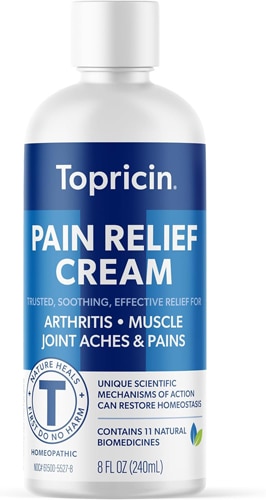A recent survey from the
International Association for the Study of Pain reveals that 50 million adults in the United States suffer
chronic pain on a daily basis. Overall, one in five American adults experience a form of chronic pain to at least some degree.
The survey also found that the most common areas of the body for chronic pain include the back, hips, knees and feet. While there are many rehabilitative and pharmaceutical methods to treat chronic pain, basic
physical exercise is often one of the most accessible and effective treatment options available.

If you’re struggling with chronic pain, here’s what you need to know about exercise as an intervention to manage or, in some cases, even heal chronic pain. Remember to check with your health practitioner to be sure exercise is a supportive option for you.
How often should you exercise with chronic pain?
All demographics can benefit from exercise to alleviate and protect against chronic pain, but certain age brackets have different exercise needs. Most adults between 18 and 64 require 150 minutes of moderate-intensity exercise per week, with at least two days a week of resistance training, according to the
CDC. Those over the age of 65 require additional balance improvement exercises too.
How does exercise help?
Some chronic pain issues can restrict mobility which then makes exercise a challenge. This is especially true among senior adults who experience a loss of muscle tissue and bone density as a result of more frequent injuries or sedentary behaviors, suggests
Clinical Interventions in Aging.
If you are able to exercise, you may find that it helps to restore functionality in painful muscles, joints, tissues and bones, while increasing your mental resilience to pain. The
British Journal of Sports Medicine explains that when you avoid exercising a certain body part due to cognitive pain-related fears, this can worsen the physiological experience of pain or sometimes even cause autoimmune reactions like tissue damage and inflammation.
However, a consistent, intentional effort to push through those fears and perform some kind of exercise will lessen the perceived threat. This mental fortitude, in turn, can stimulate physical recovery.
Which types of exercise are the most effective for alleviating chronic pain?
Not all exercise is created equal when it comes to managing and healing chronic pain. For example, long-term running may not be a good fit for someone with chronic knee pain while light resistance training for the lower body could be. Consider the various styles of fitness best-suited for moving your body with chronic pain.
Low-Impact Cardio
Cardiovascular exercises are ideal for those with chronic pain. The aerobic nature of these workouts will increase oxygen uptake to boost circulation and ease pressure on the joints, resulting in less pain, explains the
PLOS One Journal.
PLOS One also reports that cardio workouts can reduce symptoms of fatigue, depression and anxiety. This can particularly benefit fibromyalgia patients whose musculoskeletal pain often intersects with a mental health issue.
Some low-impact cardio options include swimming, walking or cycling.
Resistance Training
Full-body resistance exercises strengthen your muscles while also stabilizing your center of gravity (core, hips and back). This can improve balance and posture, lowering your risk of chronic pain or injuries. In fact, a study in the
BMC Sports Science, Medicine and Rehabilitation Journal found that resistance training workouts can help manage the effects of pain-related disabilities, enhance daily functioning and boost energy levels.
Most basic resistance training can be done with your own bodyweight. If you’re not sure where to start, work with a trainer or physical therapist who understands your chronic pain issues and can guide you safely into a workout routine that’s supportive.
Gentle Stretches
Stretching before and after a workout is crucial for lubricating the joints and preventing fitness-related injuries. Stretches also release physical tension and stiffness which, over time, can manifest as chronic pain. Ergonomic and desk stretches, in particular, alleviate the pressure that builds in your neck, shoulders and back as a result of stress or activities like sitting in front of a computer.
While the relief might not be immediate, when done consistently, stretching will both ease the pain and lower the chances of recurrence, according to the
Journal of Clinical Medicine. As with resistance training, opt for stretches that activate all regions of the body, not just areas where you have pain.
Are there risk factors to be aware of?
It’s important to know the threshold of what your own body can handle. Consult with a physical therapist or medical professional before you start a new fitness regimen, as they can create a plan to gradually ease into the workout at a comfortable, moderate pace.
Don’t forget to listen to your body’s internal cues and make periodic adjustments if necessary to accommodate pain fluctuation. You might need to curb the intensity at times or take an extra day off to recover. Remember, exercise is a tool to strengthen and rejuvenate the body—not to cause it
more strain and discomfort.
Exercise for chronic pain
Use this guide to better understand how you can manage your chronic pain with exercise. With guidance from a professional health practitioner or physical therapist, you can feel physical and mental relief while getting stronger at the same time.
Featured products:



 If you’re struggling with chronic pain, here’s what you need to know about exercise as an intervention to manage or, in some cases, even heal chronic pain. Remember to check with your health practitioner to be sure exercise is a supportive option for you.
If you’re struggling with chronic pain, here’s what you need to know about exercise as an intervention to manage or, in some cases, even heal chronic pain. Remember to check with your health practitioner to be sure exercise is a supportive option for you.






